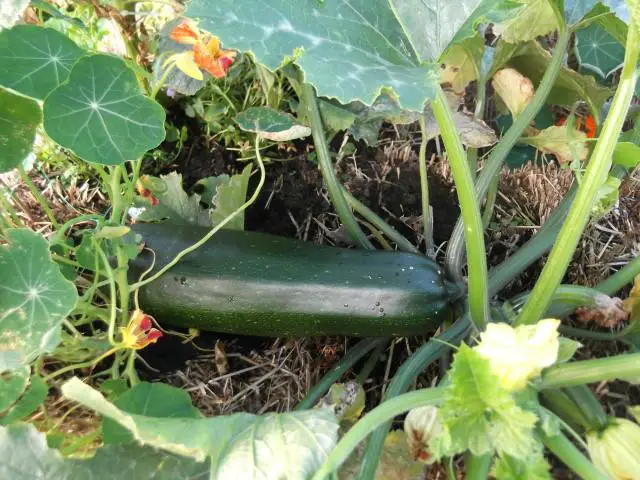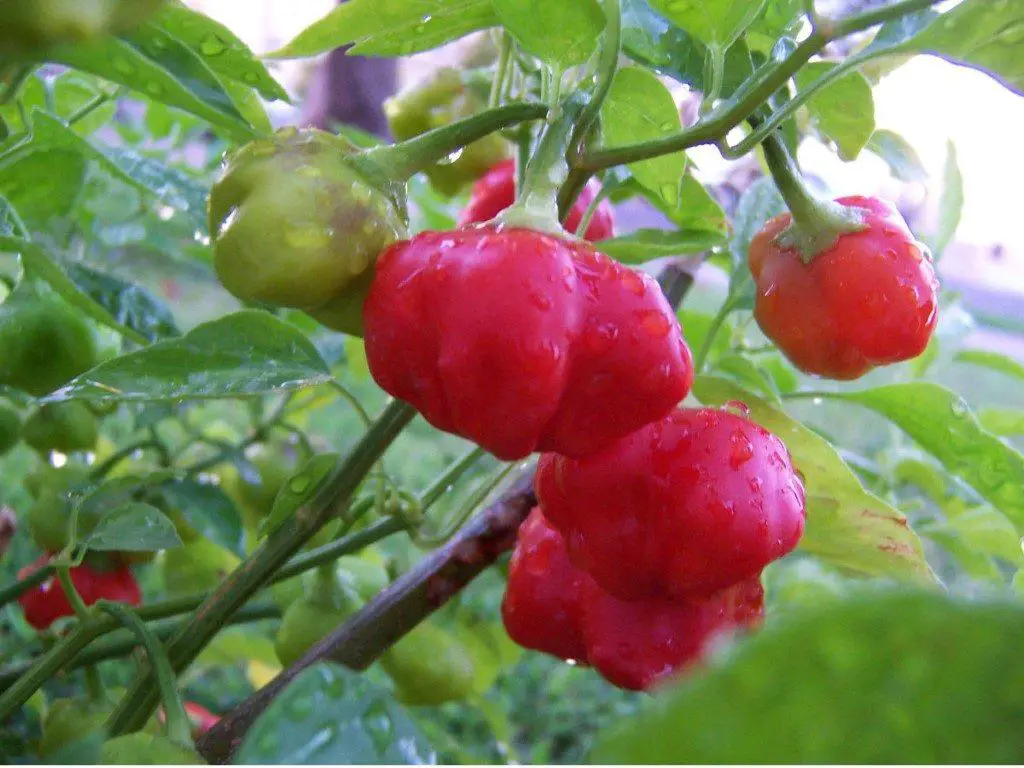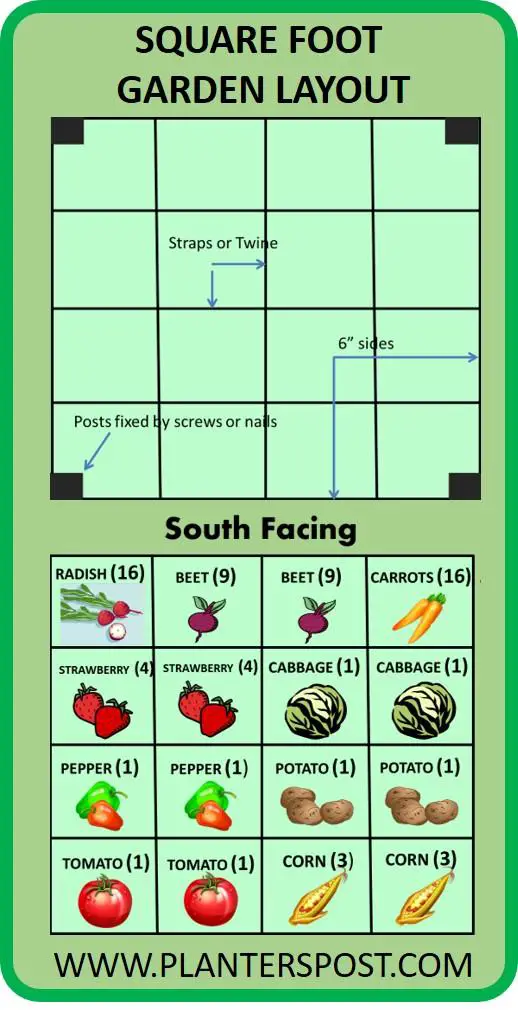Whether you are growing plants in a greenhouse, hoop-house or Polytunnel, the fact is that there are many advantages that square foot gardening in a greenhouse has to offer over traditional gardening methods.
Combining square foot garden methods with the ability to extend the growing season with a greenhouse, offers the enthusiast the opportunity to grow abundant crops over a longer period than they would be able to do with outdoor crops.
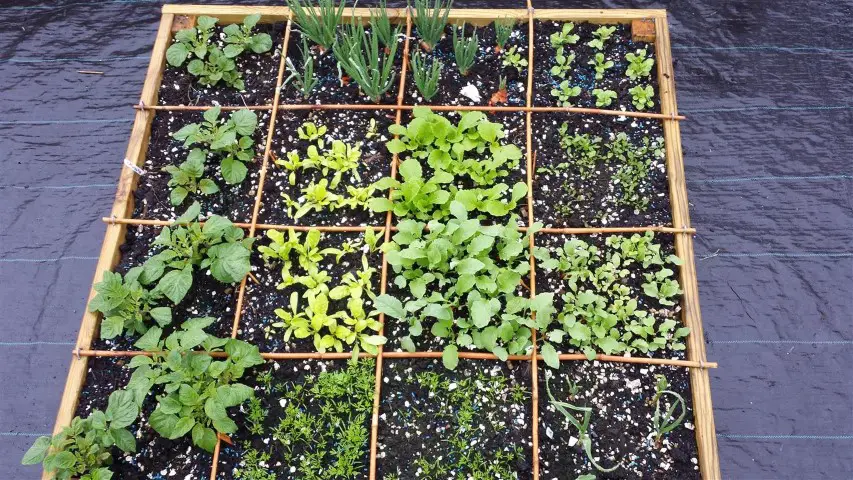
Not only this. The fact is that with the square foot gardening method less space overall is needed to grow a plentiful harvest, meaning that even the size of the greenhouse (and the related cost of same) need not ‘break the bank’ as it can be reduced significantly if space (and funding) is limited.
What is square foot gardening?
To be clear for anyone who is not familiar with the concept of Square Foot Gardening, I will outline what it is all about, and offer up some of the advantages of using this method over traditional gardening methods.
The term ‘Square Foot Garden’ refers to a framework usually (but not limited to) 4 foot by 4 foot square, that has been divided up to create sixteen 1-foot square areas.
The depth of the SFG frame (the sides) can be anything from 4 inches deep to 2.5 or even 3 foot deep, depending on the circumstances. The Bed itself can be made from many types of material but timber and metal raised garden beds are more popular.
are more popular.
For example a deeper bed is often preferred for ease of access and maintenance of the garden, especially for the physically challenged or indeed anyone who does not want to garden on their knees!
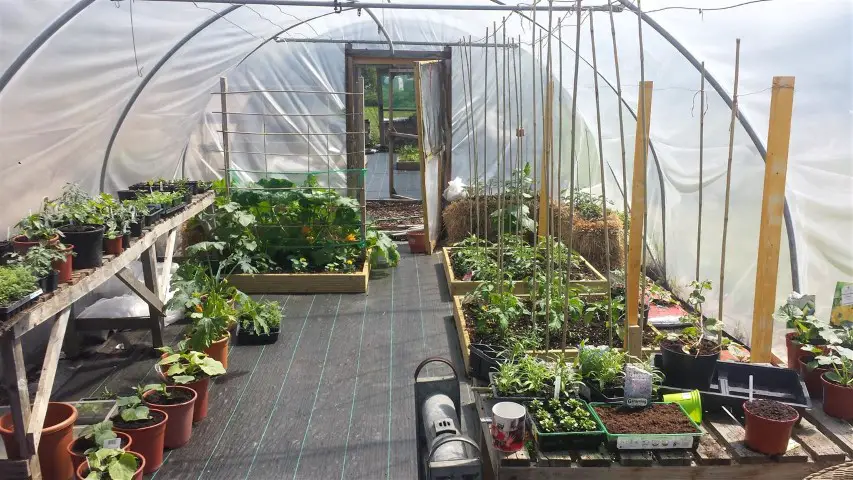
The main disadvantage of deep beds is the cost of materials both to construct and to fill the bed itself. However, this post will show how even deeper raised beds can be filled relatively cheaply.
Conversely, you can still actually do a Square Foot Garden on level ground, as long as you can divide the chosen area into 16 squares as described above.
The squares themselves can be divided using string, bamboo canes, thin wooden strips or even plumbers pipe. As long as the barrier stays in place to separate the squares throughout the growing period.
How a SFG works:
The ‘secret’ to success with square foot gardening – even in a greenhouse or polytunnel – is the infill or ‘soil’ mix that is used.
Indeed perhaps the most common mistake that newbies to Raised Bed Gardening in general make, is filling the framework (Timber or Metal Raised Bed) with soil from the garden!
This is a big no-no if you want to get not only the best results, but have less work when it comes to weeding and general plant care.
When planting in a SFG, you are putting plants much closer together than you would with a traditional ‘row’ type garden. This means that the demand for sufficient nutrients will be high, as will the need to spread out their roots unhindered with heavy soil.
There are a number of different mixes you can try, depending on the needs of the particular plant. However a good general mix is 1/3rd topsoil. 1/3rd compost and 1/3rd vermiculite or perlite.
This will ensure a good nutrient-rich, loose soil that will benefit most vegetable and fruit plants.
Next step – planting!
So now that the soil or infill is sorted, we can look at the planting itself. In particular both the number of plants, and the particulars of growing vegetables in a greenhouse that may reach well over 100 degrees Fahrenheit (37C).
Firstly, the number of plants that can be grown in each square.
As you may imagine this varies according to the size of the plant when mature.
The chart below gives a general suggestion as to how many plants of a particular type can be grown in each square, along with the average time to harvest using traditional planting methods.
| Plants | Approx Days to Harvest | Plants Per Square |
| ASPARAGUS (after shoots appear) | 14-21 | 1 |
| BASIL | 40-45 | 4 |
| BROCCOLI | 85-110 | 1 |
| BEETS | 50-70 | 9 |
| BEANS (pole) | 70-80 | 4-8 |
| BRUSSELS SPROUTS | 85-100 | 1 |
| CABBAGE | 90-100 | 1 |
| CAULIFLOWER | 85-110 | 1 |
| CARROT | 70 | 16 |
| CELERY | 60-65 | 9 |
| CORN | 80 | 3 |
| CHIVES | 80 | 16 |
| CUCUMBER | 55 | 2 |
| DILL | 65-70 | 1 |
| EGGPLANT (Aubergine) | 110-120 | 1 |
| GARLIC | 90-100 | 4 |
| LETTUCE | 40-80 | 4 |
| LEEK | 100-125 | 9 |
| MINT | 30-45 | 1 |
| ONIONS | 95-110 | 4 |
| OREGANO | 50-60 | 1 |
| PARSELY | 80-90 | 4 |
| PEAS | 70-80 | 8 |
| PEPPERS | 70-80 | 1 |
| POTATO | 80-100 | 1 |
| RADISH | 28 | 16 |
| ROSEMARY | 85 | 1 |
| SAGE | 60-90 | 1 |
| STRAWBERRY | 60-90 | 4 |
| SCALLION (Spring Onion) | 60-70 | 16 |
| SPINACH | 45-50 | 9 |
| SQUASH | 85-90 | 1 |
| TOMATOES | 70-75 | 1 |
| WATER MELON | 80-85 | 1 |
| ZUCCHINI (courgette) | 80 | 1 |
You can also DOWNLOAD THE FREE PDF HERE (No emails or hidden catches!)
Now to look at the obvious question for any seasoned vegetable gardener – How does this list of vegetables cope with the heat in a greenhouse?
The answer may be simpler than you expect – TIMING!
Every gardener knows that plants take a certain time to reach maturity and provide a harvest, indeed these times are included in the planting chart above (under outside growing conditions).
When using the square foot gardening method in a greenhouse situation, more focus has to be put on timing as this must be in conjunction with the hotter temperatures experienced under glass or polythene.
This means that not only will the plants germinate and grow faster in a greenhouse, they will also ‘bolt’ or go quickly to seed if the temperature is too hot for the cooler weather vegetables such as beetroot, broccoli, cabbage, lettuce, etc.
if the temperature is too hot for the cooler weather vegetables such as beetroot, broccoli, cabbage, lettuce, etc.
For this reason cool weather vegetables should be planted 4-6 weeks earlier in the season than normal. Then again later in the season as the temperature starts to drop again.
Keep the hotter part of the season for the plants that can bear the heat in a greenhouse like Eggplant, Peppers, Tomatoes etc.
With that in mind. Please refer to the chart below which gives the ideal growing temperatures for a selection of popular food plants.
| Plant | Ideal Growing Temperature (°F) | Ideal Growing Temperature (°C) |
| Asparagus | 70-85°F | 21-29°C |
| Basil | 70-95°F | 21-35°C |
| Broccoli | 60-75°F | 16-24°C |
| Beets | 50-85°F | 10-29°C |
| Beans (Pole) | 70-80°F | 21-27°C |
| Brussels Sprouts | 60-65°F | 16-18°C |
| Cabbage | 45-75°F | 7-24°C |
| Cauliflower | 50-75°F | 10-24°C |
| Carrot | 60-70°F | 16-21°C |
| Celery | 60-70°F | 16-21°C |
| Corn | 60-95°F | 16-35°C |
| Chives | 60-70°F | 16-21°C |
| Cucumber | 70-85°F | 21-29°C |
| Dill | 60-70°F | 16-21°C |
| Eggplant (Aubergine) | 75-85°F | 24-29°C |
| Garlic | 50-70°F | 10-21°C |
| Lettuce | 45-75°F | 7-24°C |
| Leek | 50-70°F | 10-21°C |
| Mint | 65-75°F | 18-24°C |
| Onions | 60-75°F | 16-24°C |
| Oregano | 70-80°F | 21-27°C |
| Parsley | 50-75°F | 10-24°C |
| Peas | 50-75°F | 10-24°C |
| Peppers | 70-85°F | 21-29°C |
| Potato | 60-70°F | 16-21°C |
| Radish | 50-70°F | 10-21°C |
| Rosemary | 70-85°F | 21-29°C |
| Sage | 60-75°F | 16-24°C |
| Strawberry | 60-75°F | 16-24°C |
| Scallion (Spring Onion) | 55-75°F | 13-24°C |
| Spinach | 50-75°F | 10-24°C |
| Squash | 60-95°F | 16-35°C |
| Tomatoes | 70-85°F | 21-29°C |
| Watermelon | 70-90°F | 21-32°C |
| Zucchini (Courgette) | 70-95°F | 21-35°C |
Implementing the Square Foot gardening method in your Greenhouse or Polytunnel
Growing in a greenhouse in many ways is similar to the concept of ‘Hot Bed Gardening’ that was particularly popular to the Parisian gardeners in the early 19th century. (More in this post).
So apart from the ability to grow hot-weather plants in cooler climates, I mean that the growing season is dramatically extended, allowing for both earlier crops and late-season crops when the traditional growers have ‘ran out of season’ and can no longer produce.
Square foot gardening methods work on many different levels in-that no matter what the plant you choose, it will almost always do better when planted in this way.
Some of the advantages of using SFG would include the following…
- Space Efficiency: Square foot gardening maximizes space by dividing the garden into small, manageable squares, allowing for more crops in a given area compared to traditional row planting.
- Reduced Weeding: The close spacing helps to shade the soil, minimizing weed growth, moisture loss, and reducing the time and effort needed for weeding owing to the ‘looseness’ of the soil mix.
- Optimized Water Usage: SFG allows for efficient water use, as each square is planted densely, reducing water evaporation and promoting water conservation.
- Better Soil Quality: By using a mix of compost, vermiculite, and topsoil in each square, square foot gardening improves soil structure and fertility, providing an ideal growing environment for most plants.
- Easy Accessibility: The small, defined squares make it easy to reach all parts of the garden without stepping on the soil, minimizing soil compaction and damage to plant roots.
- Improved Pest Control: Companion planting and the diversity of crops in a small space can help deter pests, reducing the need for chemical interventions in comparison to large, mono-cropped rows.
- Suitable for Small Spaces: SFG is particularly well-suited for small spaces, both in a greenhouse or outdoor environment. Making it attractive to urban and suburban gardeners with limited areas for cultivation.
- Organized Design: The grid layout of the square foot garden creates an organized and visually appealing garden, making it easier to plan and manage different plant varieties.
- Adaptability to Containers: SFG principles can be applied to container gardening, making it a versatile method for those who have limited outdoor space or only have access to balconies or patios.
- Easier Maintenance: The smaller, defined planting areas within a 4 x 4 framework, make it easier to manage and care for individual plants. This save time and effort and is particularly well suited to growing plants in a limited space such as a small greenhouse.
These advantages contribute to the popularity and success of square foot gardening for both beginners and experienced gardeners alike.
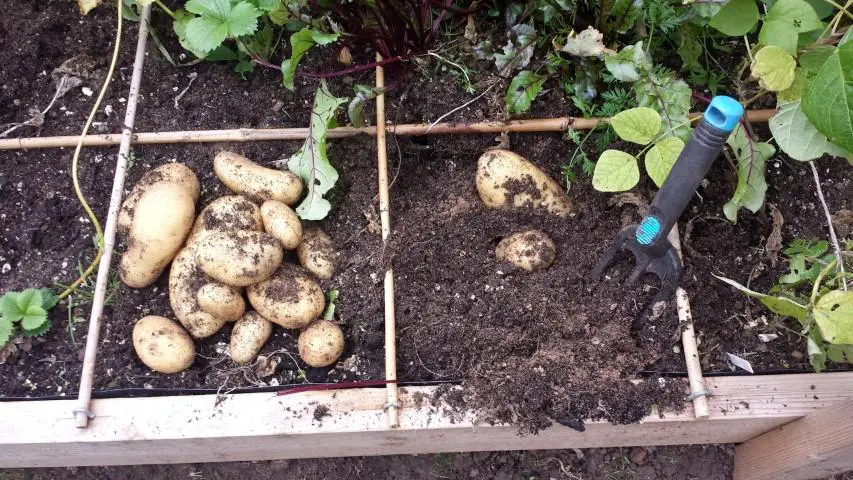
The Final Word
By adopting the SFG gardening method into growing food plants in a greenhouse, I have experienced a huge return on my investment in both time and money as the results ‘speak for themselves’ on almost year-round fresh food.
If you are someone who appreciates great results from your gardening efforts, then turning over your greenhouse to square foot gardening methods could be a total ‘game changer’ for all of the reasons highlighted above.
If you haven’t already tried SFG methods in your greenhouse – maybe it’s time to give it a go and see the results for yourself!
like to know more about Square Foot Gardening? Check out our book on the subject available through Amazon.


